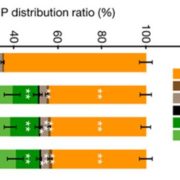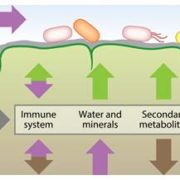The contribution of solar brightening to the US maize yield trend ($)
 Over the past several decades, the amount of maize produced in the US Midwestern “Corn Belt” has been rising steadily. In order to accurately predict future grain yields, the factors that contribute to these recent yield increases must be identified. Tollenaar et al. found that more than a quarter (27%) of recent US maize yield increases are a consequence of “solar brightening” – an increase in the amount of light reaching the Earth’s surface in these growing regions. Solar brightening and dimming are affected by clouds but also by air quality. In other parts of the world, declining air quality has led to solar dimming. The authors argue that the beneficial impacts on grain yield should be considered when calculating the costs associated with efforts to protect air quality, and also that the effect of solar brightening is not likely to continue to increase, making the case that genetic sources of yield improvement will be even more important for future yield increases. Nature Climate Change 10.1038/nclimate3234
Over the past several decades, the amount of maize produced in the US Midwestern “Corn Belt” has been rising steadily. In order to accurately predict future grain yields, the factors that contribute to these recent yield increases must be identified. Tollenaar et al. found that more than a quarter (27%) of recent US maize yield increases are a consequence of “solar brightening” – an increase in the amount of light reaching the Earth’s surface in these growing regions. Solar brightening and dimming are affected by clouds but also by air quality. In other parts of the world, declining air quality has led to solar dimming. The authors argue that the beneficial impacts on grain yield should be considered when calculating the costs associated with efforts to protect air quality, and also that the effect of solar brightening is not likely to continue to increase, making the case that genetic sources of yield improvement will be even more important for future yield increases. Nature Climate Change 10.1038/nclimate3234










Leave a Reply
Want to join the discussion?Feel free to contribute!